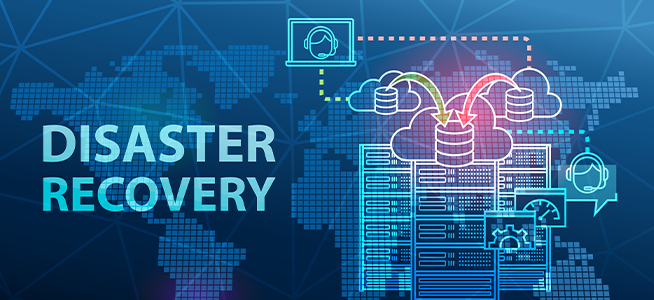What Are Examples of Disaster Recovery?
Benjamin Franklin once said, “by failing to prepare, you are preparing to fail.” When it comes to disaster recovery for businesses, this sentiment certainly rings true. In fact, according to Cheshire Fire, about 75% of companies worldwide who do not have a disaster recovery plan in place fail within 3 years of disasters occurring. That’s why here at Moser Consulting, we take disaster recovery and business continuity planning seriously as a part of our IT infrastructure services.
There is certainly a lot to consider in regards to the disaster recovery process. To help simplify it a bit, we are taking a look at:
Types and examples of disaster recovery
Disaster recovery plan phases
How Moser can help you be better prepared
What Are the Types of Disaster Recovery?
There are three types of disaster recovery based on and named after the three types of disasters: technology-based, physical, and natural.
Technology-Based Disaster
As the name implies, technology-based disasters have to do with the IT or cybersecurity of an organization. Examples of technology-based disasters include things like:
Ransomware and malware attacks
Accidental data leaks
Security breaches
Phishing scams
Server failure
Loss of data
Internet outages
The list goes on and on. Because there are so many potential ways and opportunities for technology-based disasters to occur, they are in fact the most frequent of the three types.
A technology-based disaster recovery plan should include considerations for the following questions:
What work does the impacted technology support?
What type of IT incident would be the most damaging to your business?
How can you protect against total data loss?
What limitations will this disaster place on your organization? For how long?
Physical Disaster
Physical disasters can cover a wide array of events. They could be building-related issues such as a burst pipe or a broken HVAC system. They can also include physical break-ins and security breaches. They might also take the form of wider infrastructure failures like a loss of power or running water.
You physical disaster recovery strategies should address:
How will this impact physical assets, and for how long?
Will your communications or workflow be impacted, and if so, how?
How will you react to a long-term issue?
How will you react to a short-term issue?
What third-parties might you need to rely on to help you?
How can you support your employees' needs throughout the process?
Natural Disaster
When most people hear the word disaster, this is probably the type they first think of. Natural disasters include things like tornadoes, fires, floods, hurricanes, and other weather-related catastrophes. Other types of natural disasters could include things like a pandemic or even employee deaths or injuries.
A natural disaster recovery plan should consider the following questions:
How will this impact physical assets?
Will your communications methods be affected, and if so, how?
Will your workflow be impacted, and if so, how?
How can you support your employees' needs throughout the process?
What Are 3 Disaster Recovery Phases?
Three phases of disaster recovery are preparedness, response, and recovery. Oftentimes, people might include mitigation as the first phase of disaster recovery. However, no matter how much you work to minimize the risk of disaster, there are certain things you can’t control or prevent entirely. That is why it’s important to map out your preparedness, response, and recovery plans.
Preparedness: Preparedness focuses mainly on understanding how a disaster may impact your company and how education and training can help enable your team to respond. This includes creating a business continuity and disaster recovery plan, educating employees on emergency protocols, and actively and testing maintaining your disaster recovery methods.
Response: During the response, your organization addresses the most immediate threats of the disaster. This can include things like safety precautions, addressing basic humanitarian needs, cleaning up, damage assessment, re-establishing communications, and more depending on the type of disaster.
Recovery: In this phase, the goal is to restore the business to operations. At first the idea is to restore the organization to a sustainable state. Eventually however, the goal will be to resume full-service operations.
Stay Ready with Moser Consulting
At Moser Consulting, we know how important it is to be prepared for the worst. But, even if you “expect the unexpected,” how can you be sure you are actually prepared for it? One key way is to put your disaster recovery plan to the test. With our table top activities, we do exactly that.
During the activity we:
Get your disaster recovery team and key stakeholders in the room together
Present a hypothetical scenario (ransomware, tornado, data leak, etc.)
Simulate the scenario and observe the disaster plan in action
After all of that happens, we put together an after action report that summarizes the plans strengths, weaknesses, and opportunities. We then suggest remedial actions that can help improve your plan. These recommended remediations can be done through Moser, or on your own.
Our end goal isn’t to cast blame or trick you into buying more services from us. We simply want to act as a true partner, consultant, and extension of your team to make sure that when disaster inevitably strikes, you’re prepared. Contact us today to get started.


